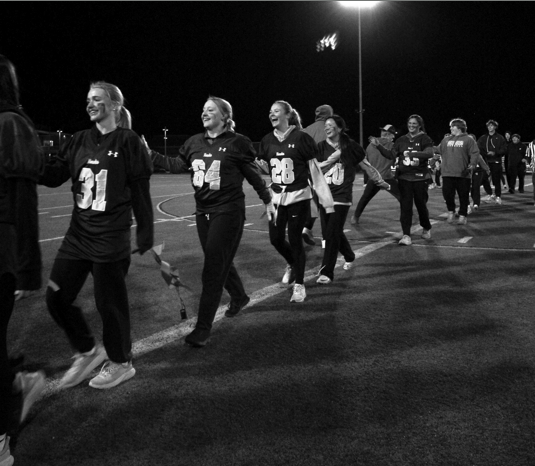Consequences for absence explained; Pawlicki comments on attendance policies
April 13, 2023
The state of Maryland defines chronic absenteeism as a student who is not in school for 90% of the time. People who have missed 10% of the school year are chronically absent.
“The magic number is 17,” principal Mr. Bryan Pawlicki says. “We have 180 days; if you hit 18, you’re chronically absent.” Whether the absences are lawful or unlawful does not matter. “If a family goes on a vacation for a week, those five days count against you,” Pawlicki explains.
The state reports schools’ attendance. Attendance is used as a value to determine a school’s rating. “That’s why attendance to represent the school is very important to get all the points we possibly can to be a high-performing school,” the principal says.
According to Pawlicki, 25% of NH students are chronically absent. “Most of those are at 13 days,” he adds. “They are chronically absent at this point, but they can improve that by not being absent anymore for the rest of the school year and keeping that number below 17.”
“So many kids are on the bubble and they stay close to that 10% as we go through the school year,” he says.
To address this issue, the administration sends letters out, emails out, and calls home so parents know when students are absent. “We do a lot of that as interventions to help remind people about their attendance,” Pawlicki explains.
“We understand that when someone’s sick or when things come up, that you have to be absent, but we want to have parents and students keep things in mind if there’s that opportunity to not miss a day of school, that day shouldn’t be missed,” Pawlicki says.
Attendance may affect students in ways, including apprenticeships or HCC. According to Pawlicki, you must have 90% attendance or better to be considered for these programs. “The county will pay for your HCC if you have 90% or better, if you don’t, you may still be able to attend, but you’d have to cover that tuition yourself,” he explains. “We look at attendance closely, so when we send students to go part-time and work, we are sending out students that are going to have good attendance to those employers.”
Guidance counselors are a good resource, according to Pawlicki. They will work with students when they are on or close to the 10% absence rate.
For being late, “If you miss a certain percentage of the day, then you would be marked absent for the whole day,” Pawlicki starts. “If you are over half a day, then you could be marked partially absent.” Partial absences may add up. For example, two half-absences would equal one day of absence.
Regarding seat time in a full-year class, “Following the ninth day of an unlawful absence in a full-year course, the credit could be withheld from the student for that course,” Pawlicki states. “The total of nine unlawful days could affect students being awarded the credit. If it is withheld, an appeal could be made to me to see what the reason was if there were extenuating circumstances about the unlawful absences.”
For seat time in a single-semester course, it is the fifth day when a student loses credit.
Pawlicki believes attendance has been affected by COVID. “I think culture has changed a little bit since COVID; our attendance used to be strong and people being connected to home more caused our attendance and habits to be different,” he explains. “And it’s not just us, you can see trends throughout the majority of schools in Harford County.”











